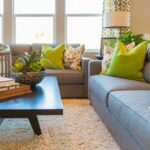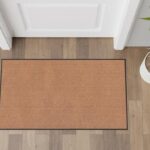Capturing and editing stunning home decor photos is essential for creating a visually appealing and cohesive interior design. In this article, we will explore the art of editing home decor photos and its impact on the overall aesthetic of interior design. From choosing the right editing software to mastering color correction and composition, we will provide valuable insights and techniques for enhancing your home decor photography skills.
The ability to edit home decor photos effectively can make a significant difference in how your interior design projects are perceived. Whether you are an interior designer looking to showcase your work or a homeowner wanting to document your design accomplishments, understanding the basics of home decor photography and editing is crucial in today’s visual-centric world.
As we delve into the intricacies of editing home decor photos, we will discuss everything from the essential equipment and lighting techniques to choosing the right editing software for achieving professional-looking results. We will also provide step-by-step guides on color correction, composition, enhancing light and shadows, as well as removing imperfections to elevate your home decor photography skills. Stay tuned as we uncover valuable tips and tricks for producing captivating and visually inspiring home decor photos.
The Basics of Home Decor Photography
When it comes to capturing stunning home decor photos, having the right equipment, understanding lighting, and mastering angles are essential. To begin with, a quality camera is crucial for achieving high-resolution images that showcase the details and beauty of interior design elements. A camera with manual mode capabilities allows for greater control over settings such as aperture, shutter speed, and ISO, which can significantly impact the outcome of home decor photography.
In addition to having the right camera, proper lighting is key in home decor photography. Natural light is often preferred for its ability to create a soft and inviting ambiance in photos. However, when natural light is not available or insufficient, supplemental lighting such as softbox lights or ring lights can help illuminate the space and highlight key areas of interest within the home decor.
Another important factor to consider when capturing home decor photos is the use of different angles. Experimenting with various angles can offer unique perspectives and compositions that elevate the visual appeal of interior spaces. Angles such as eye-level shots, overhead shots, and close-up detail shots all contribute to a comprehensive representation of the home decor.
Understanding how to edit home decor photos to enhance their visual appeal is just as crucial as capturing them effectively in the first place. Editing can make significant differences in color balance correction, cropping techniques, enhancing light and shadows, removing imperfections digitally and adding final touches with filters.
No matter how good your original photo might be there will always be some aspect you would want to tweak when taking it forward in order to display it before social media platforms or digital platforms where we surround ourselves every day on our screens giving importance more focussed on editing these days rather than capturing them perfectly. Investing time and effort into learning how to edit home deocr photo’s will certainly yield so much benefit.
Choosing the Right Editing Software
When it comes to editing home decor photos, choosing the right editing software is crucial in achieving stunning and captivating results. There are several popular editing software options available, each with its own unique features to enhance home decor photos.
One of the most popular software choices for editing home decor photos is Adobe Photoshop. This versatile software offers a wide range of tools and features for color correction, composition, and retouching, making it a go-to choice for many professional photographers and interior designers.
Another highly regarded editing software for enhancing home decor photos is Lightroom by Adobe. This software is known for its user-friendly interface and powerful editing capabilities specifically tailored to photography. With its non-destructive editing workflow, Lightroom allows users to make adjustments to color balance, lighting, and composition without altering the original image, making it an ideal choice for preserving the integrity of home decor photos.
In addition to these industry-standard options, there are also alternative editing software programs such as Capture One Pro and GIMP that offer robust features for enhancing home decor photos. These programs provide a cost-effective solution for those looking to achieve professional-quality edits without breaking the bank.
Ultimately, the best editing software for enhancing home decor photos will depend on the specific needs and preferences of the individual user. Whether it’s advanced retouching or simple color correction, there is a wide range of options available to cater to different skill levels and desired outcomes when it comes to perfecting home decor photography.
| Editing Software | Main Features |
|---|---|
| Adobe Photoshop | Color correction, composition tools |
| Lightroom by Adobe | Non-destructive editing workflow |
| Capture One Pro | Professional-quality edits |
| GIMP | Cost-effective solution |
Color Correction and White Balance
When it comes to color correction, there are several popular editing software options available that offer robust features for enhancing home decor photos. Some well-known choices include Adobe Photoshop, Lightroom, and GIMP. These programs provide tools for adjusting color temperature, tint, saturation, and hue to achieve the desired look for home decor photos. Additionally, many editing software platforms offer presets and custom white balance settings for quick and efficient color correction.
To effectively correct color balance in home decor photos, it is essential to understand the concept of white balance. White balance ensures that whites appear neutral without any unwanted color casts. Automatic white balance settings may not always produce accurate results, especially in indoor lighting conditions.
Therefore, manually adjusting white balance based on the type of lighting used during the photo shoot is essential for achieving vibrant and accurate home decor photos. Whether shooting under natural light or artificial lighting sources such as tungsten or fluorescent bulbs, adjusting white balance accordingly can greatly enhance the overall quality of home decor photos.
In summary, mastering the art of color correction and white balance adjustment is key to producing stunning home decor photos. From choosing the right editing software with robust color correction tools to understanding the significance of white balance in achieving accurate colors, these techniques play a pivotal role in elevating interior design photography.
By implementing these practices when editing home decor photos, photographers can ensure that their work reflects the true essence of a well-designed space while captivating viewers with vibrant visuals.
- Understand popular editing software options such as Adobe Photoshop and Lightroom
- Learn about presets and custom white balance settings for efficient color correction
- Manually adjust white balance based on different lighting conditions for optimal results
Cropping and Composition
When it comes to editing home decor photos, the process of cropping and composition plays a crucial role in presenting a visually appealing and balanced look. Properly cropped and composed photos can enhance the overall aesthetic of interior design and elevate the impact of the space. In this section, we will explore some useful tips on how to edit home decor photos to achieve professional-looking results.
One key tip for successful cropping and composition is to consider the rule of thirds. By dividing the image into nine equal parts using two horizontal and two vertical lines, you can strategically position key elements of the photo along these lines or at their intersections. This technique creates a sense of balance and visual interest that is pleasing to the eye.
Additionally, it’s essential to pay attention to negative space when cropping home decor photos. Negative space refers to the areas of an image where there is no focal point, allowing for breathing room within the composition. When editing home decor photos, consider using negative space to draw attention to specific design elements or create a sense of openness that adds depth and dimension to the photograph.
Furthermore, when composing home decor photos, be mindful of leading lines that naturally guide the viewer’s eye through the image. These lines could be architectural details, furniture arrangement, or even patterns in textiles. By utilizing leading lines effectively during editing, you can direct focus towards important elements within the space and create a sense of flow within the composition.
| Tips for Cropping and Composition | Usage in Home Decor Photos |
|---|---|
| Rule of Thirds | Strategically positions key elements in photographs for balance |
| Negative Space | Creates breathing room within compositions for added depth |
| Leading Lines | Naturally guides viewer’s eye through images to highlight important elements |
Enhancing Light and Shadows
When it comes to home decor photography, the manipulation of light and shadows can significantly impact the overall appeal and ambiance of the captured space. Properly adjusting lighting and shadows in your home decor photos can transform a mundane room into a visually stunning and inviting space. In this section, we will delve into techniques for enhancing light and shadows to create a dynamic and captivating atmosphere in your home decor photos.
Understanding Light and Shadow Dynamics
Before diving into the editing process, it’s crucial to understand the dynamics of light and shadow within a photograph. Light sources, both natural and artificial, can dramatically influence the mood and tone of a room. Shadows play an equally important role in adding depth, dimension, and drama to a photo. By understanding how light interacts with different surfaces and objects within a room, you can strategically manipulate these elements to create visually compelling home decor photos.
Adjusting Exposure and Contrast
One of the fundamental aspects of enhancing light and shadows in home decor photos is through the adjustment of exposure and contrast. Editing software allows you to fine-tune these elements to either brighten up dark areas or tone down overly bright spots in your photos. By carefully manipulating exposure levels and contrast, you can emphasize specific focal points within the room while maintaining an overall balanced illumination.
Creating Depth With Shadows
Shadows are not merely absence of light; they are essential for creating depth, texture, and drama in a photograph. Understanding how to enhance or soften shadows can completely change the mood of a room in your home decor photos. By strategically adjusting shadow intensity and softening harsh shadows, you can add dimensionality and visual interest to your images. Mastering the art of balancing light with shadow can elevate the atmosphere within your home decor photos from ordinary to extraordinary.
By implementing these techniques for adjusting lighting and shadows in your home decor photos, you’ll have the power to create captivating images that bring out the true essence of each space. Understanding how to edit home decor photos by using various editing software’s features will allow you achieve a dynamic look that enhances interior design aesthetics.
Removing Imperfections
When it comes to home decor photography, capturing the perfect shot can be challenging. It’s not uncommon to end up with photos that have blemishes, distractions, or imperfections that take away from the overall aesthetic. This is where the magic of digital editing comes into play. With the right techniques, it’s possible to digitally remove these imperfections and enhance the appeal of your home decor photos.
Identifying Imperfections
Before you can begin removing imperfections from your home decor photos, it’s important to identify what needs to be addressed. This could include anything from dust on surfaces, to unwanted reflections, to clutter in the background. By carefully examining your photos, you can pinpoint areas that require attention during the editing process.
Using Editing Tools
Once you’ve identified the imperfections in your home decor photos, it’s time to turn to editing software for solutions. Many popular photo editing programs offer tools such as clone stamp, healing brush, and spot healing brush that are specifically designed for removing blemishes and distractions. Learning how to use these tools effectively is essential for achieving professional-looking results.
Applying Techniques
While each imperfection may require a different approach for removal, there are some general techniques that can be applied across various scenarios. For example, using the clone stamp tool to duplicate clean areas of an image and cover up imperfections seamlessly. Additionally, paying attention to details such as texture and lighting will help ensure that edited areas blend naturally with the rest of the photo.
By mastering the art of removing imperfections from home decor photos via digital editing, you can elevate the quality of your photography and showcase interior spaces in their best light. With practice and continued exploration of advanced editing techniques, you’ll be able to create stunning images that capture the true essence of a well-designed space.
Final Touches and Filters
Now that you have captured stunning home decor photos and made basic adjustments, it’s time to explore the use of filters and final editing touches to truly bring out the best in your images. Whether you’re aiming for a warm and cozy feel or a clean and modern look, the final touches and filters you choose can greatly impact the overall aesthetic of your home decor photos.
Filters
When it comes to enhancing home decor photos, filters can be a game-changer. They allow you to add a specific tone or mood to your images, whether it’s a vintage feel, black and white effect, or a pop of color. Popular editing software often comes with built-in filters, but there are also countless options available for download. Experiment with different filters to see which ones best complement the style and ambiance of your home decor.
Final Editing Touches
In addition to using filters, there are several final editing touches you can apply to further enhance your home decor photos. This may include adjusting contrast, sharpness, saturation, and clarity. Pay attention to small details such as dust or smudges on surfaces, as these can detract from the overall appeal of the image. By making precise final edits, you can elevate the quality of your home decor photos and bring out their true beauty.
Applying Both Filters and Final Touches
To achieve the best results in enhancing your home decor photos through filters and final editing touches, experiment with different combinations until you find the perfect balance. When working with multiple layers of adjustments, it’s important to maintain a cohesive look throughout all your images. By applying both filters and final touches strategically, you can create stunning home decor photos that reflect the style and atmosphere of the space while capturing attention and inspiring others.
By understanding how various filters and final editing touches can transform ordinary images into extraordinary ones, you will be well-equipped to take your home decor photography skills to new heights.
Conclusion
In conclusion, the art of editing home decor photos is a crucial skill that can truly elevate the overall aesthetic of interior design. From color correction to composition, and from enhancing light and shadows to removing imperfections, the process of editing home decor photos is indeed a meticulous one. However, the results can be incredibly rewarding, as they have the potential to showcase a space in its best light and capture the true essence of its design.
By now, you should have gained valuable insights into the different aspects of editing home decor photos and how each step contributes to creating visually stunning images. Whether you are an interior designer looking to showcase your work or simply a homeowner wanting to capture beautiful moments within your space, the techniques discussed in this article can be applied to enhance your own home decor photography skills.
Remember that practice makes perfect, so do not hesitate to experiment with different editing software and techniques until you find what works best for you. Ultimately, by honing your skills in how to edit home decor photos, you will be able to create compelling visuals that not only reflect the beauty of a space but also evoke a sense of inspiration and admiration from those who view them.
Frequently Asked Questions
What Is the Best Photo Editor for Interior Design?
The best photo editor for interior design is subjective and depends on the specific needs of the designer. Some popular options include Adobe Photoshop, Lightroom, and Canva, each offering different features for enhancing interior photos.
How Do I Edit an Indoor Photo in Photoshop?
To edit an indoor photo in Photoshop, start by adjusting the levels, brightness, contrast, and color balance to enhance the overall look of the image. You can also use tools like the clone stamp or healing brush to remove any unwanted objects or blemishes.
How Do I Edit My Real Estate Photos?
When editing real estate photos, it’s essential to accurately represent the property while making it visually appealing. This involves adjusting lighting, straightening lines, correcting colors, and using techniques like HDR (High Dynamic Range) to capture more details in both bright and dark areas of the image.
Additionally, removing distractions and enhancing key features can help make a property more enticing to potential buyers.

I’m thrilled to be your companion on this exciting journey through the world of home decor and design. With a passion for turning houses into homes and a keen eye for the finer details, I’m here to help you transform your living spaces into beautiful, functional, and meaningful havens.





